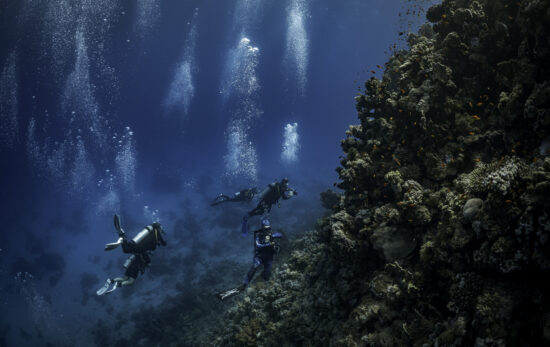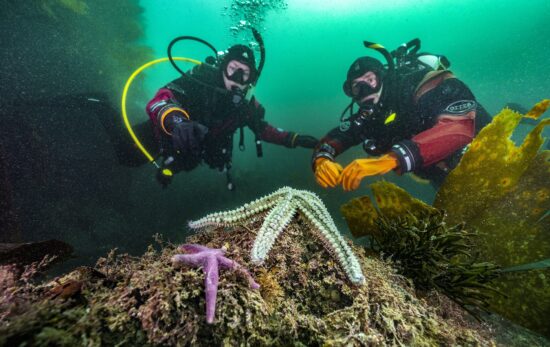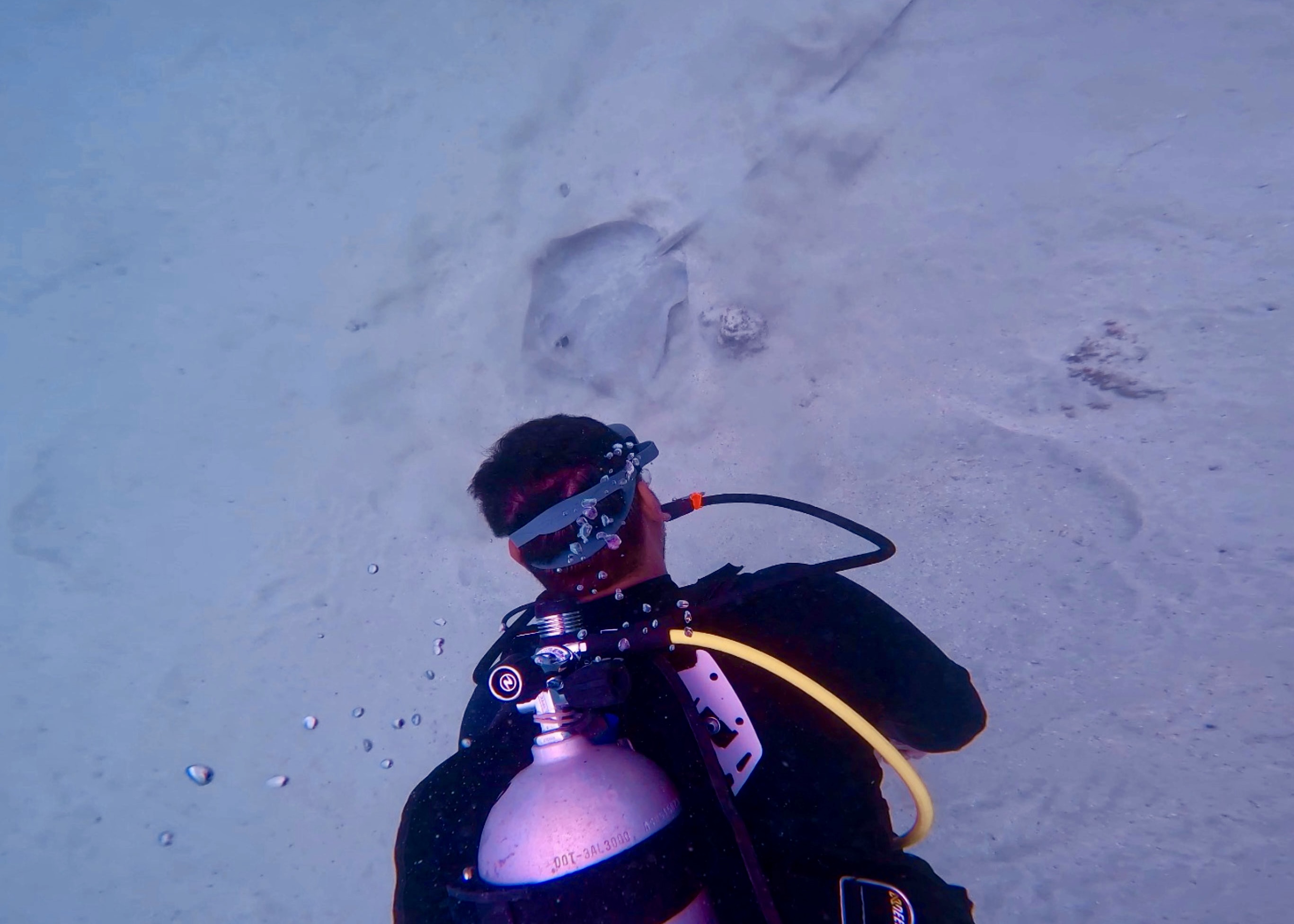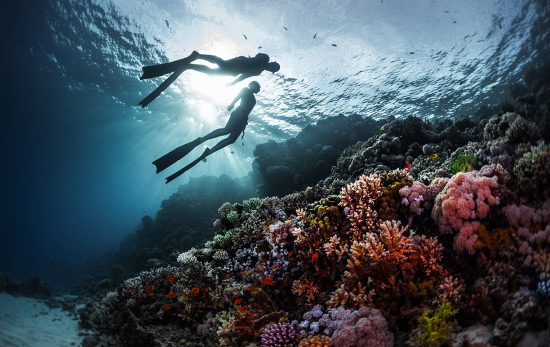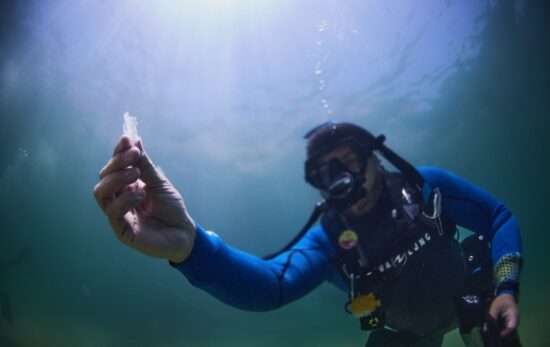Are hammerhead sharks endangered? The short answer is yes. Why does this matter? Sharks and rays are important to the health of the ocean and are increasingly important attractions for the diving industry. Hammerhead sharks are top predators and their hammer-shaped heads make them truly astonishing to see and a reason people travel to certain dive sites. Sad to say, a 2021 study found that about a third of all sharks and rays are threatened with extinction. This finding highlights the importance of shark conservation – the preservation and protection of sharks and their habitats.
Do you want to get started with hammerhead shark conservation to help protect them? Read on to learn what you need to know!
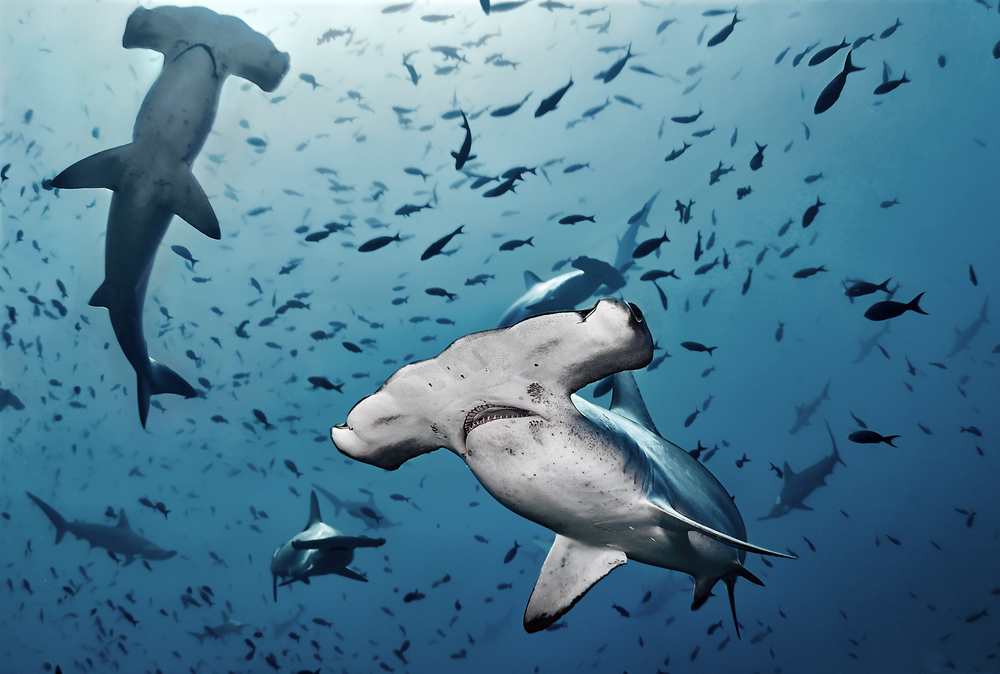
Are Hammerhead Sharks Endangered?
Unfortunately, most of the species of hammerhead sharks are classified on the IUCN Red List as Critically Endangered, Endangered, or Vulnerable. Populations are declining, and habitats are changing. It’s important to understand hammerhead sharks and how they interact with their ocean environment to better understand their threats and how to protect them.
Anatomy
Hammerhead sharks have a cartilaginous skeleton. Their flexible and strong skeleton allows them to swim and maneuver quickly. Cephalofoil is the name for hammerhead sharks’ heads. With one eye on each side, their wide vision helps the sharks scan their surroundings quickly. This helps them find their prey. Great hammerhead sharks even use the side of their head to pin down stingrays when hunting them!
Threat: Overfishing is the main threat to hammerhead sharks. They are caught for their fins and are also caught as bycatch.
Lifespan & Reproduction
Hammerhead sharks are long-living and slow-growing, like all shark species. For example, the smallest hammerhead shark, the bonnethead sharks, has a lifespan of 12 years. While the lifespan of the largest hammerhead, the great hammerhead shark, is 20 to 30 years. Hammerhead sharks are viviparous, meaning they give birth to live young. The smaller species have smaller litter sizes, ranging from 4 to 14 pups. The great hammerhead shark’s litter size is 6 to 42 pups.
Threat: Hammerhead sharks are particularly vulnerable to the effects of overfishing, because they are slow-growing and produce relatively few young (compared to a fish that releases thousands of eggs multiple times a year to reproduce). The hammerhead population can’t recover quickly from overfishing pressures.
Habitat
Hammerhead sharks live in global temperate and tropical waters. They hang out near the coast (making it easy to dive and see them!) and are migratory.
Threat: Habitat degradation from development and pollution are threats to hammerhead populations, since coastal waters are close to the shore and easier for people to access. Climate change is a growing threat impacting the ocean, changing the habitat ranges of sharks and their prey.
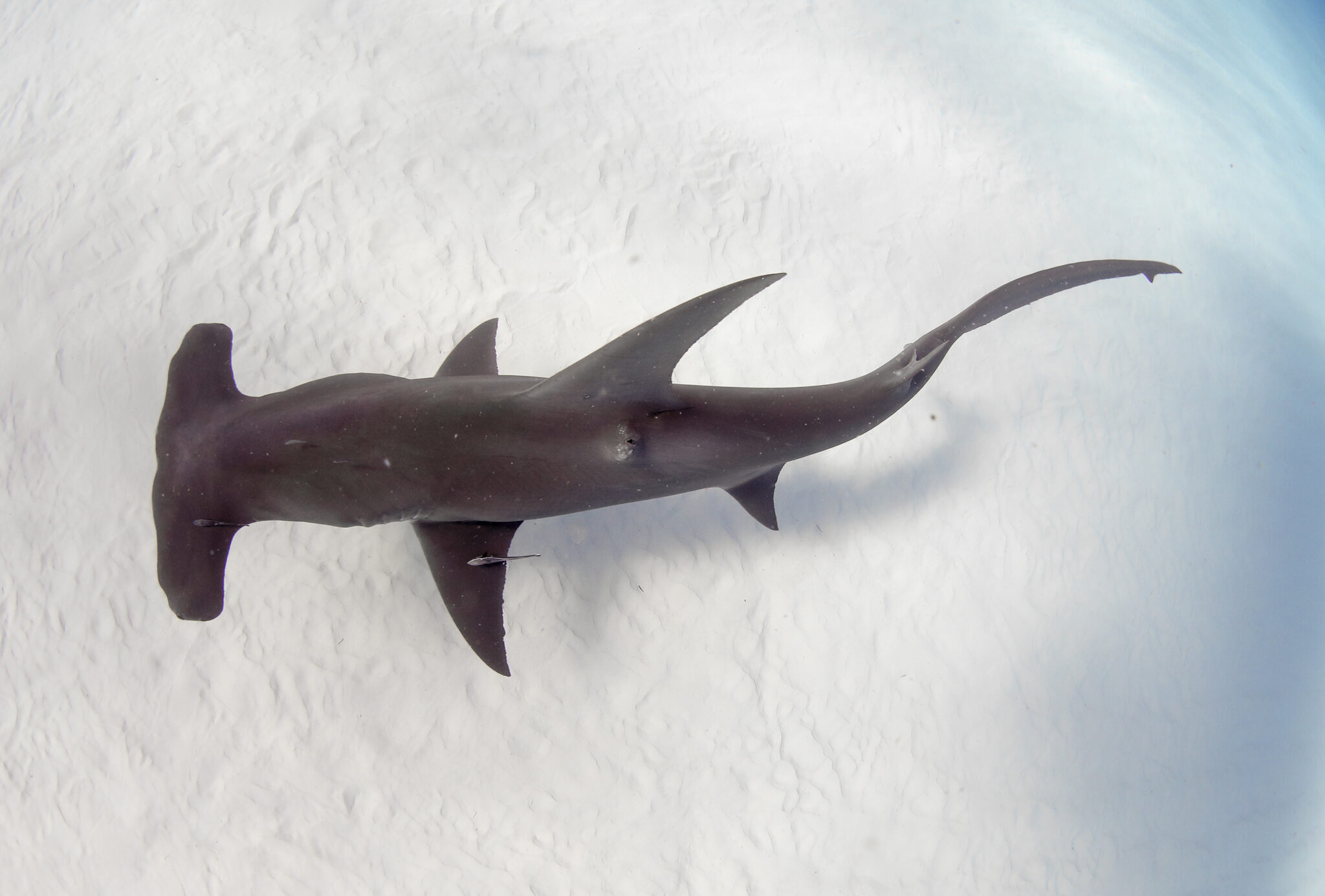
Hammerhead Shark Conservation Status
You can explore the IUCN pages of the 10 hammerhead shark species to learn about their conservation status:
- Winghead Shark – Endangered
- Scalloped Bonnethead – Critically endangered
- Whitefin Hammerhead – No data on population
- Scalloped Hammerhead – Critically endangered
- Scoophead Shark – Critically endangered
- Great Hammerhead – Critically endangered
- Bonnethead – Endangered
- Smalleye Hammerhead – Critically endangered
- Smooth Hammerhead – Vulnerable
- Carolina Hammerhead – Data deficient
Amazingly, scientists only just discovered the Carolina hammerhead in 2013! Not only is there still so much to explore and learn about the ocean and its inhabitants, but it’s very important to protect the ocean.
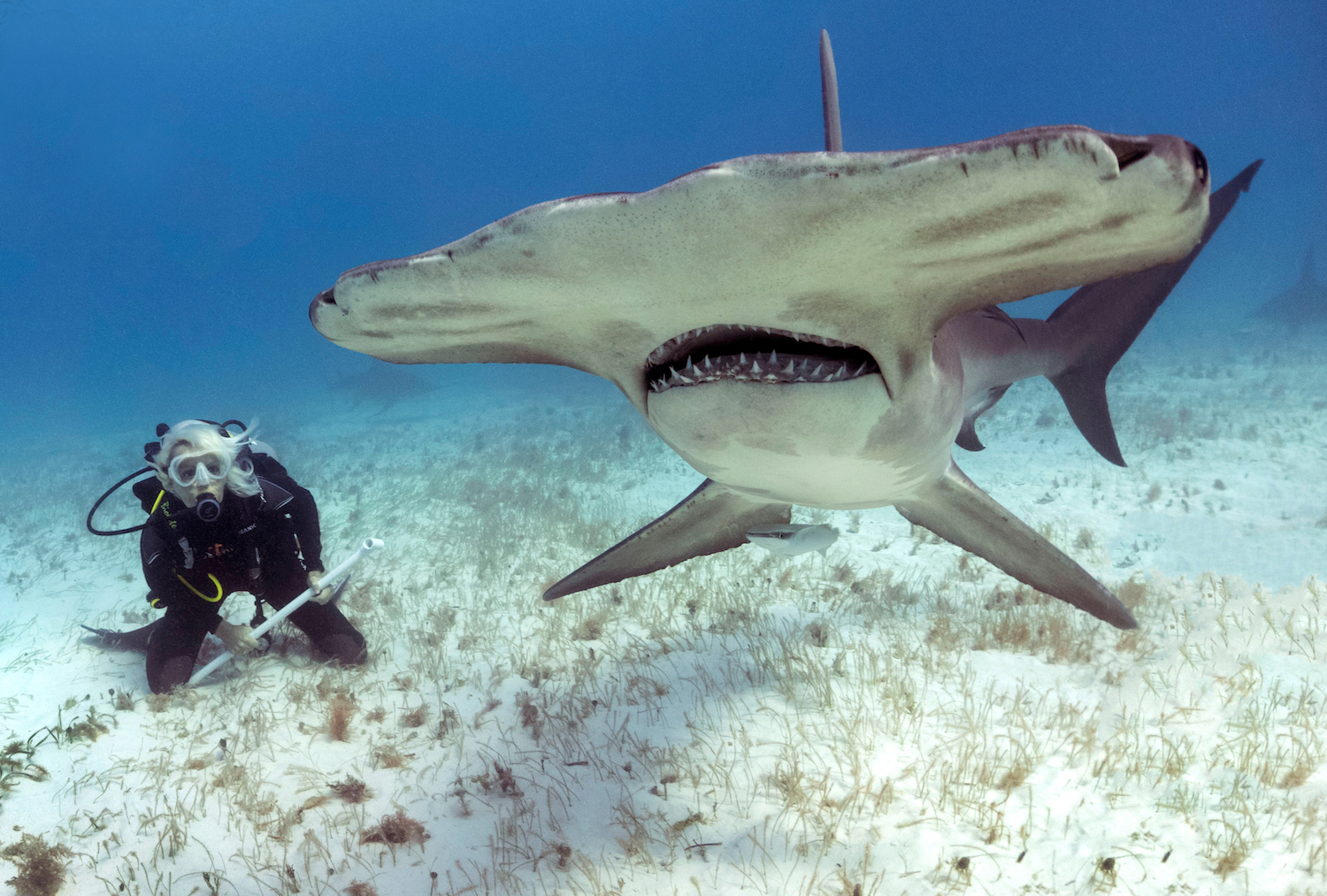
Conservation Actions
Lastly, what can we do to protect and conserve hammerhead sharks? Many things, actually! In fact, there are organizations and universities that study and monitor these sharks and their habitats. Policymakers can use the data and results to make better informed decisions on managing fisheries and other industries that impact sharks.
The PADI AWARE Foundation is a non-profit organization whose mission is to drive local action for global ocean conservation, and the Foundation has a shark and ray species protection program. The goal is to reduce the number of sharks and rays threatened with extinction by 25% by 2030. PADI AWARE and the PADI dive community advocate for restrictions on unregulated fishing, effective marine protected areas and monitoring the health of local shark and ray populations.
As a diver, you can become involved with the PADI AWARE shark and ray conservation efforts! One way is to take the AWARE Shark Conservation Diver Specialty Course. This course provides great content for divers to learn more about threats to sharks and how to take action and participate in shark participation. On top of that, you can weave shark conservation into your everyday life by sharing shark conservation facts with your communities, supporting sustainable fisheries by purchasing sustainable seafood, and supporting sustainability practices in the dive industry.
Are hammerhead sharks endangered? Yes, but we can work towards a future where they are not! Ready to dive in and support shark conservation? Learn more about hammerhead sharks by reading our articles on 12 fascinating facts about hammerhead sharks and the Hammerhead Triangle, then sign up for the AWARE Shark Conservation Diver Specialty Course!
Alternatively, donate to PADI AWARE to contribute to their shark and ray campaigns, that take local actions and make global impacts. By signing up to PADI Club, 5% of your annual membership fee is automatically donated to PADI AWARE.
